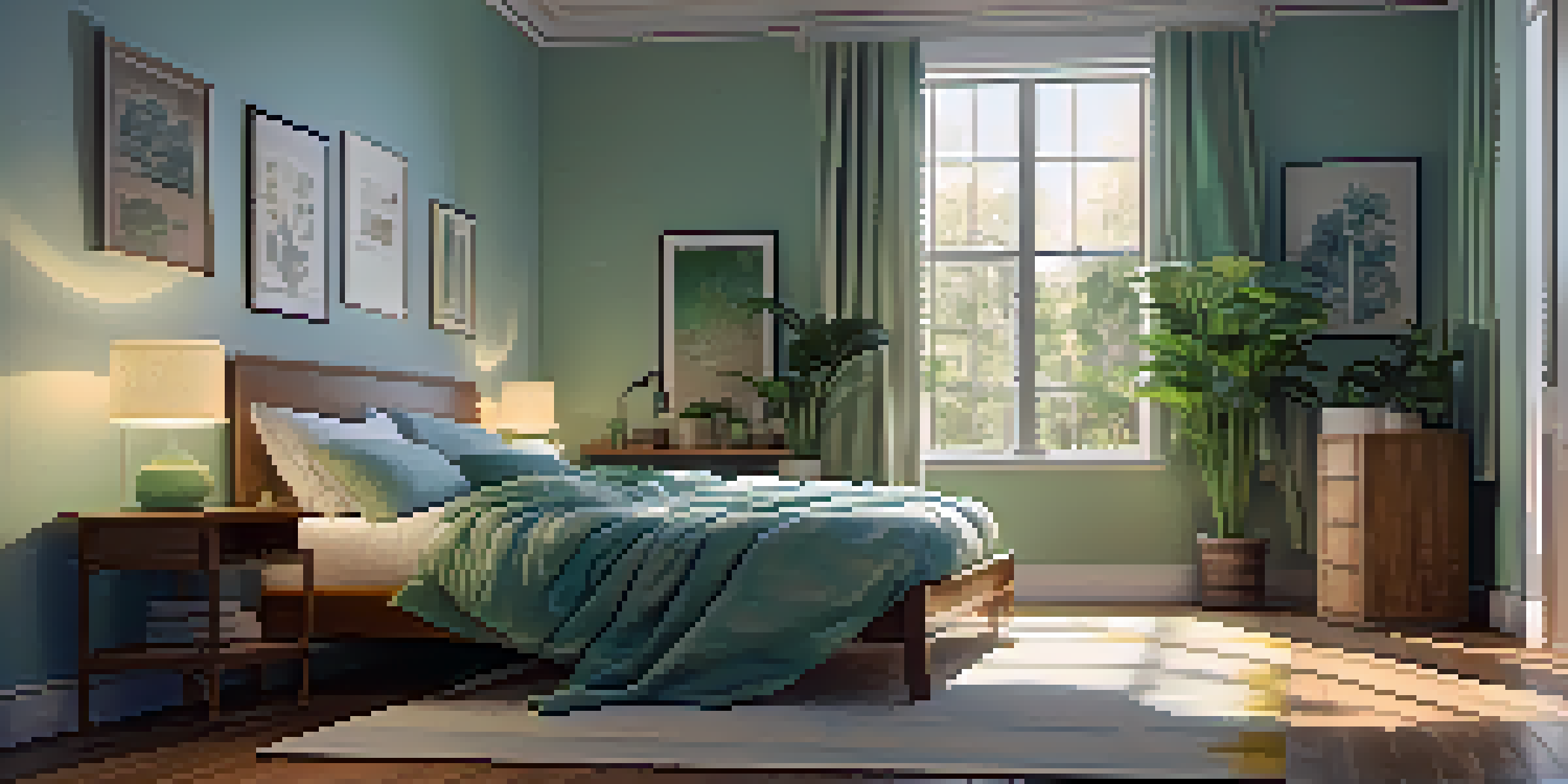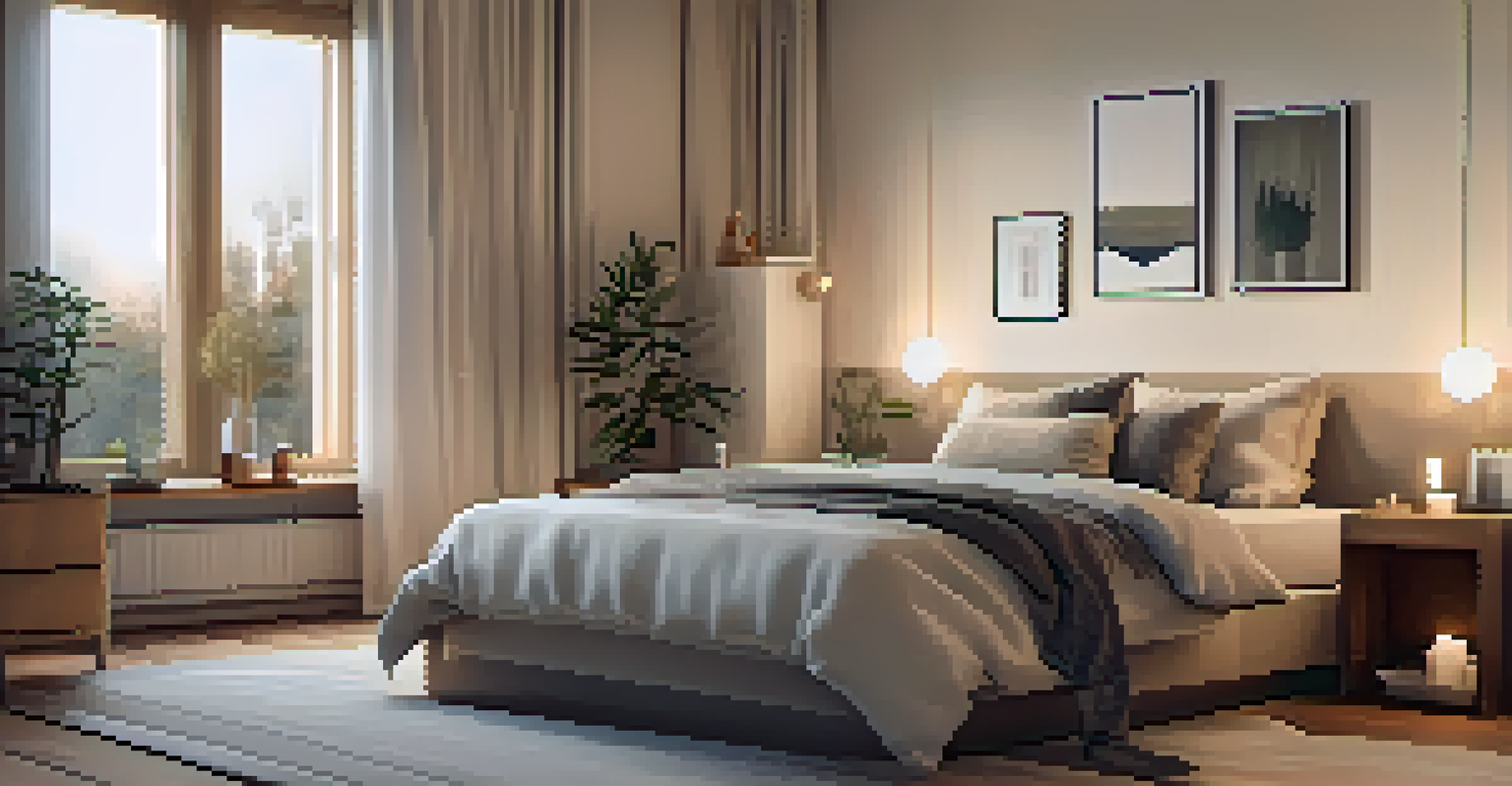Creating a Sleep-Friendly Environment for Mental Well-Being

Understanding the Link Between Sleep and Mental Health
Sleep and mental health are intimately connected, much like two sides of the same coin. When you have a good night's sleep, you wake up feeling refreshed, focused, and ready to tackle the day. Conversely, inadequate sleep can lead to issues like anxiety and depression, creating a challenging cycle. Understanding this relationship is the first step toward creating a sleep-friendly environment.
Sleep is the best meditation.
Consider how you feel after a night of tossing and turning. Your mood might be irritable, and your ability to concentrate can suffer. This is because sleep deprivation affects the brain's ability to regulate emotions, leaving you more vulnerable to stress. By prioritizing sleep, you not only boost your mental clarity but also foster emotional resilience.
So, how can you break the cycle of poor sleep impacting your mental health? Creating a nurturing sleep environment can help. Let's explore practical tips to transform your space into a haven for restorative slumber.
Decluttering Your Space for Better Sleep
A cluttered room can lead to a cluttered mind, making it harder to relax when it's time to sleep. Think of your bedroom as a sanctuary; it should promote peace and tranquility rather than chaos. Start by removing unnecessary items and organizing your belongings to create a calming atmosphere. A tidy space is visually soothing and can significantly reduce stress levels.

Imagine coming home after a long day to a room filled with piles of clothes, stacks of books, and scattered belongings. It can be overwhelming, right? Instead, envision a clean, minimalistic space where each item has its place. This not only makes it easier to unwind but also signals to your brain that it's time to relax.
Sleep Impacts Mental Health
A good night's sleep enhances focus and emotional resilience, while poor sleep can lead to anxiety and depression.
Decluttering doesn't have to be a daunting task. Begin with one area at a time, and gradually transform your space into a sleep-friendly environment. A little organization can go a long way in promoting better sleep and, ultimately, better mental health.
Choosing the Right Lighting for Sleep
Lighting plays a crucial role in signaling your body when it's time to wind down. Bright, harsh lights can disrupt your circadian rhythm, making it harder to fall asleep. On the other hand, soft, warm lighting can create a calming ambiance that encourages relaxation. Consider using dimmable lights or lamps with warm bulbs for a more inviting atmosphere.
The greatest weapon against stress is our ability to choose one thought over another.
Imagine coming home in the evening to a room illuminated by bright overhead lights. It can feel jarring after a long day. Instead, opt for softer lighting, perhaps through fairy lights or candles, which can help create a cozy nook. This type of lighting mimics the natural setting sun, signaling your body to prepare for sleep.
Moreover, consider blackout curtains to minimize external light disturbances. Creating a gentle, dim environment can significantly enhance your ability to drift off peacefully, ultimately benefiting your mental well-being.
The Role of Color in Promoting Calmness
Color can have a profound impact on our emotions and mood, making it an essential factor in creating a sleep-friendly environment. Shades like blues and greens are known for their calming effects, promoting relaxation and tranquility. When choosing colors for your bedroom, think about how different hues make you feel and opt for those that encourage a peaceful state of mind.
Imagine walking into a room painted in bright red or neon colors; it might feel energetic and chaotic, right? In contrast, a soft blue or muted green can create a soothing atmosphere, making it easier to unwind. Your bedroom should feel like a retreat, where the colors reflect serenity and calm.
Create a Calming Sleep Environment
Decluttering your space and using soothing colors and lighting can significantly improve your sleep quality.
Experiment with accent walls, bedding, or decor in these calming colors. By incorporating soothing hues into your space, you can promote a restful environment conducive to quality sleep and improved mental health.
Creating a Comfortable Sleep Setup
Comfort is key when it comes to getting a good night's sleep. Your mattress, pillows, and bedding should all work together to create a cozy haven. If you're waking up sore or fatigued, it might be time to invest in a new mattress or quality pillows that support your head and neck properly. The right setup can make all the difference in how well you sleep.
Think about how you feel when lying on a lumpy mattress versus a plush, supportive one. A comfortable sleep setup allows your body to relax fully, promoting deeper sleep cycles. Additionally, consider breathable bedding made from natural fibers that help regulate your body temperature throughout the night.
Don't forget to personalize your sleep area with your favorite blankets or plush pillows. A comfortable space tailored to your preferences can enhance your sleep experience and, in turn, support your overall mental well-being.
Incorporating Nature into Your Sleep Space
Bringing nature indoors can work wonders for your mental health and sleep quality. Plants not only purify the air but also create a serene atmosphere that promotes relaxation. Consider adding a few low-maintenance plants, like snake plants or peace lilies, to your bedroom to boost your mood and enhance your sleep environment.
Imagine waking up to the sight of green leaves and the fresh smell of nature instead of cold, sterile decor. This connection with nature can significantly reduce stress and anxiety levels, making it easier to fall asleep and stay asleep. Plus, the act of caring for plants can be a calming ritual in itself.
Establish a Relaxing Bedtime Routine
A consistent routine helps signal to your body that it's time to wind down, making it easier to transition to sleep.
If you're short on space or don't have a green thumb, consider incorporating nature-inspired decor, like botanical prints or earthy tones. This not only enhances the aesthetic appeal of your room but also creates a natural, calming vibe that supports better sleep.
Establishing a Bedtime Routine for Better Sleep
A consistent bedtime routine signals to your body that it's time to wind down. This could include activities like reading a book, practicing gentle stretches, or meditating before bed. Establishing a calming routine can help transition your mind from the busyness of the day to a more restful state, ultimately improving your sleep quality.
Consider how you feel when you rush into bed after a long day without any wind-down time. It can be difficult to switch off your thoughts and relax. Instead, dedicate at least 30 minutes to your routine, allowing yourself to slowly transition into sleep mode.

Incorporate activities that you enjoy and find calming. The more you stick to your routine, the more your body will recognize these signals, making it easier to drift off peacefully and wake up refreshed, ready to tackle whatever life throws your way.